






Scheveningen
is one of the eight administrative districts of The Hague and is best
known today as a modern seaside resort with a long sandy beach, an
esplanade, a pier, and a lighthouse which is especially popular with
visitors from Germany. It had always been a fishing village (its coat
of arms consists of three crowned herrings) but the fishing boats were
beach launched until the large harbour was constructed in 1904.
On the 8 May 2014 I visited Scheveningen to see the place where where the voyage of the Zeemanshoop began. The present day lifeboat is moored in the same position as the Zeemanshoop
in 1940 and it was easy to imagine the scene as the students hijacked
the lifeboat and set off for England with 46 men and women aboard in
calm weather but overladen and with a temperamental and unfamiliar
engine.
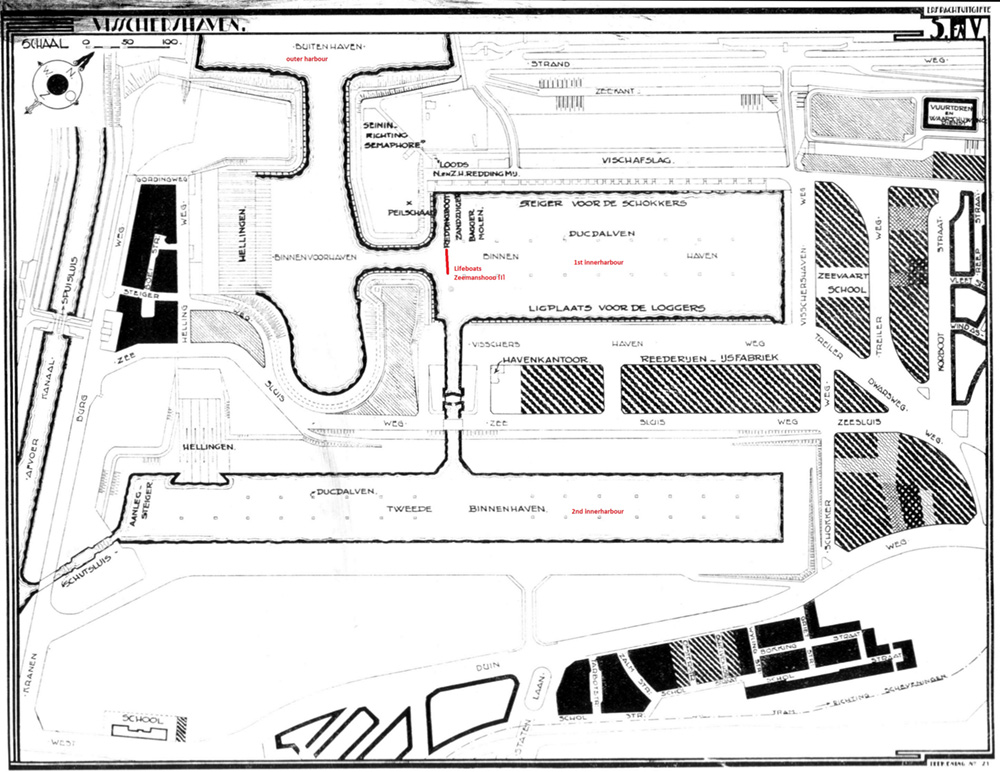
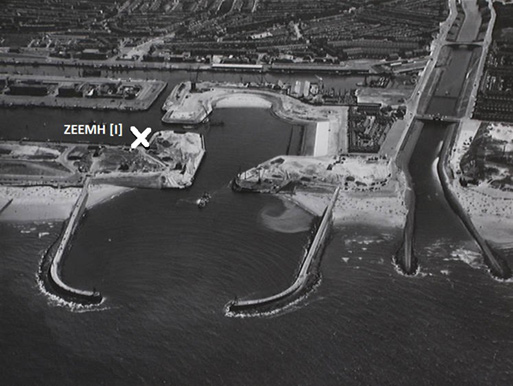
The layout of the inner and outer harbours in 1929 and the position of the Zeemanshoop in the outer harbour when it was taken over by the students in 1940
Courtesy of Wybe van der Wal
My guide was Wybe van der Wal, the enthusiastic historian of Dutch lifeboats who restored the Dorus Rijkers and has recorded the history of the Reddingsboot on his www.dorusrijkers.nl web site. The two breakwaters at the entrance to the harbour had been lengthened but the inner and outer harbour were little changed from 1940. He showed me the modern lifeboat berthed in exactly the same position as the Zeemanshoop in 1940 and a crew member allowed us to step aboard. Today's lifeboat, Kitty Roosmale Nepveu, is a 28 ton Rigid Inflatable Boat (RIB), 20 metres long with two identical one thousand horse power jet engines with a maximum speed of 35 knots and modern navigational equipment. Wim Belinfante, a passengers on the Zeemanshoop in May 1940, bequeathed the money for a similar lifeboat named Zeemanshoop stationed at Breskens near the mouth of the River Scheldt opposite Vlissingen (Flushing). The original Zeemanshoop built in 1925 with money donated by the Koninklijk College Zeemanshoop to celebrate its centenary in 1922 is still afloat but has been converted into a motor launch and is up for sale. During its working life it was called out ("shouts") 216 times and rescued 323 men but is mainly remembered today for its voyage to England on the day the Netherlands surrendered.
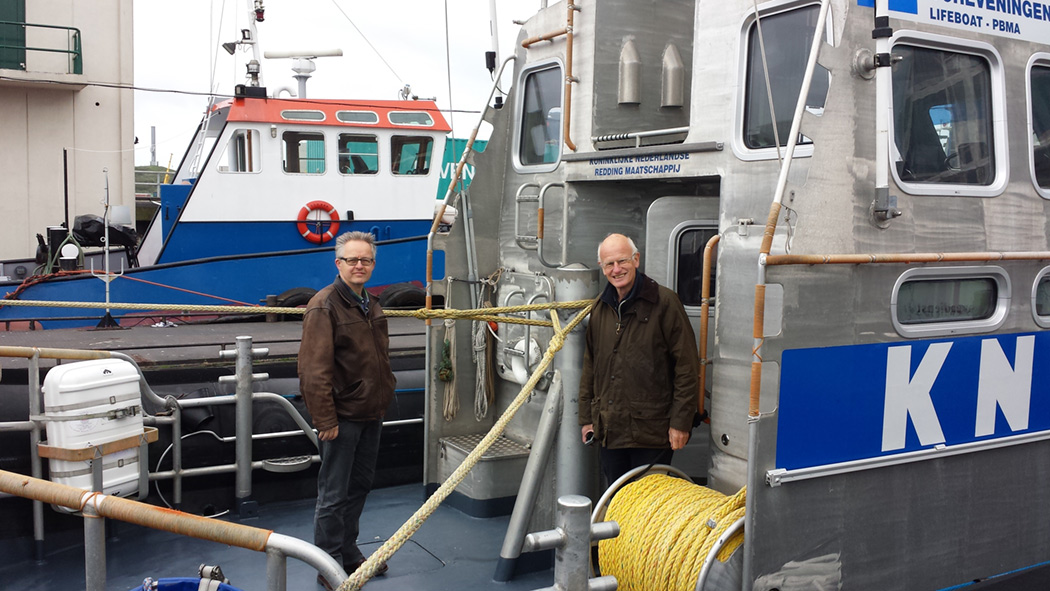
Lucas Ligtenberg and Bill Forster aboard the Kitty Roosmale Nepveu in the harbour at Scheveningen on the 9 May 2014
Photographed by Wybe van der Wal
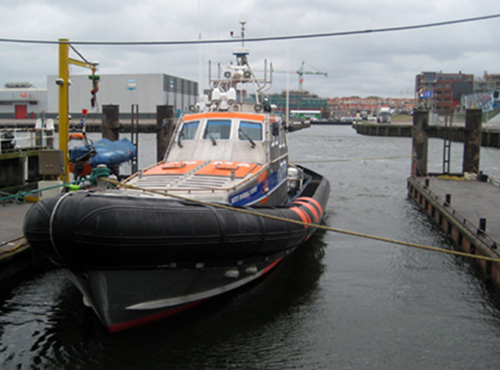
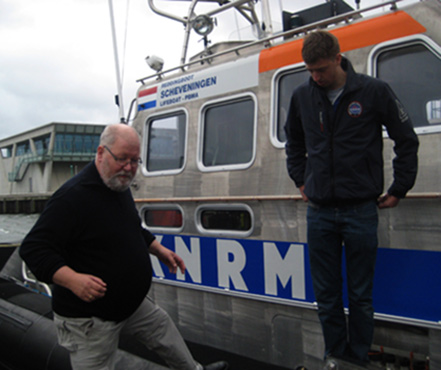
Wybe van der Wal steps aboard the modern lifeboat at its berth in the outer harbour as a crew member looks on
Photographed by Bill Forster
The weather could not have been better when the Zeemanshoop with Karel Dahmen at the helm left
the outer harbour at 7.40 pm on the 14 May 1940 and after passing between
the lights at the end of the two breakwaters set course for England. On the 9 May 2014 when
I stood on the breakwater facing the sea it was a bright sunny spring
morning but the wind was so strong that I could barely keep my feet.
For the first time I appreciated the reason why Marien de Jonge, an
experienced yachtsman, was concerned as he considered what would happen
should the weather change as had to be expected in the North Sea.
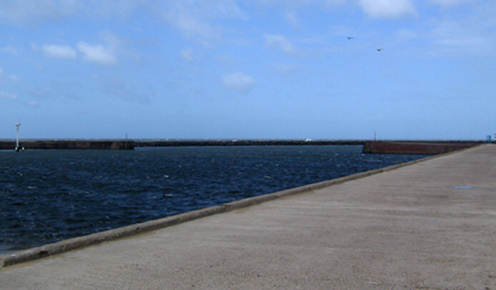
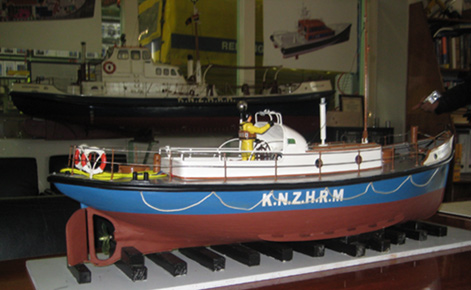
The
extended breakwaters protecting the outer fishing harbour at
Scheveningen and Wybe van der Wal's model of the original Zeemanshoop
Photographed by Lucas Ligtenberg (left) and Bill Forster (right)
The inspiring story of the voyage of the Zeemanshoop and its mainly Jewish passengers has a darker side. Some family members who could not escape killed themselves on the day the lifeboat left Scheveningen for England and many of the passengers had poison capsules and during the long night at sea debated whether the time had come to take them. Lucas Ligtenberg, a journalist and author, has researched the stories of these men and women who committed suicide to avoid falling into the hands of the Germans and his book on this distressing subject is expected to be published next year. Lucas accompanied us to the street where Loet Velmans lived with his family in the Belgium quarter of Scheveningen and we followed the route he took on his bicycle to the harbour where his parents joined him by taxi minutes before the departure of the Zeemanshoop.
I would like to hear from the families of the following passengers on the Zeemanshoop who have not been traced -
Jacob Meier
(or Meyer) described by Harry Hack as a "Koopman (merchant) in London",
Meuleman and wife, Singer (assumed to be male),
three women and a man with a name which has been variously interpreted
as Von Arnheim / Aruheim or Von Stroheim, and a man with a Czech name
which may be P. Zaitschek or, perhaps, more correctly Zajíček.
Their names were recorded on the sea chart during the voyage but they have not been traced and I would be grateful
to anybody who can identify them and put me in touch with their families.
Bill Forster
Holywell House Publishing
See an illustrated report on the
75th Anniversary of the voyage of the Zeemanshoop
at Scheveningen on Thursday 14 May 2015
Read about the restoration of the Zeemanshoop and where to see her now
return to the home page for the
Story of the Zeemanshoop
and the lives of its passengers and crew